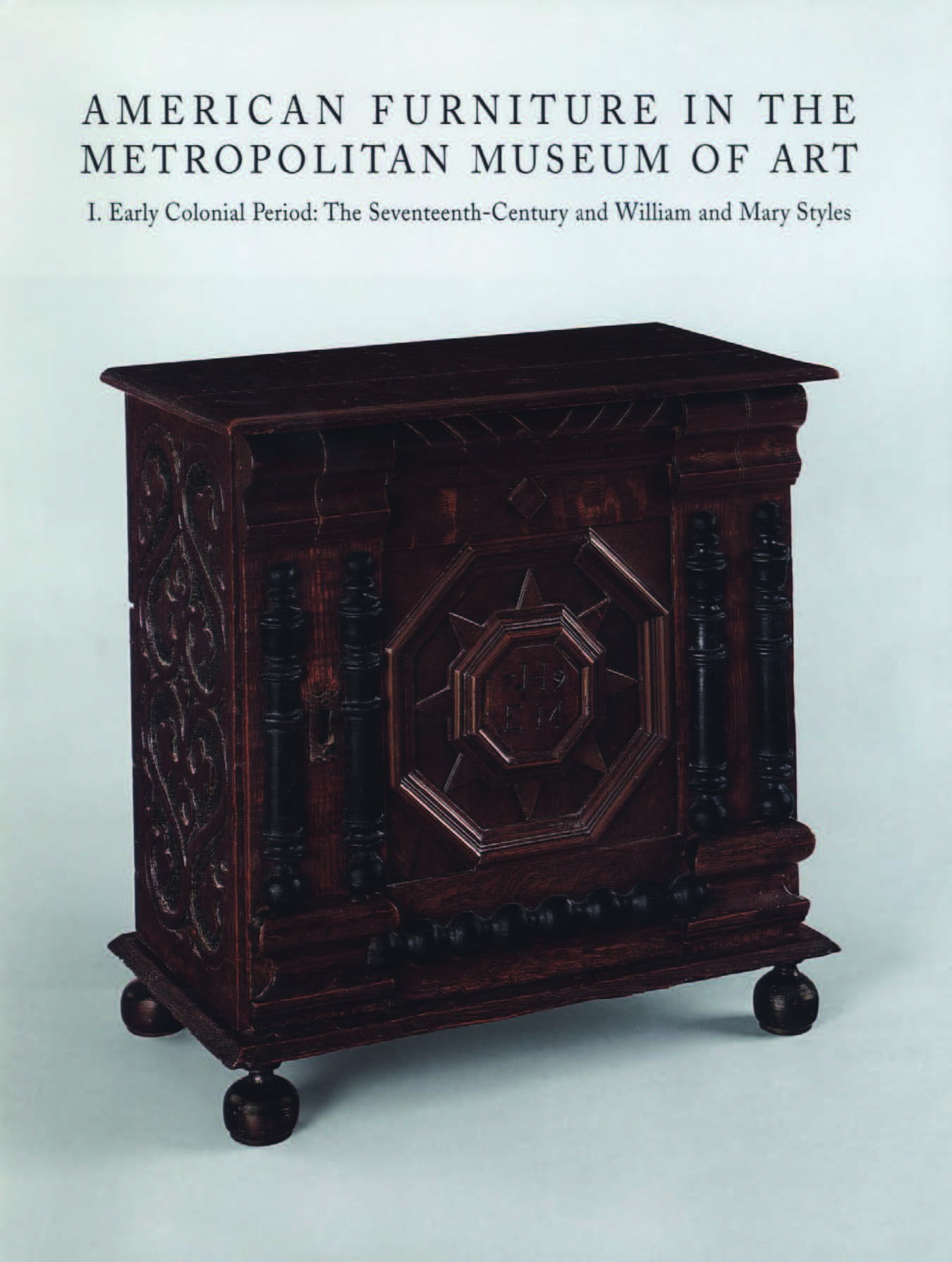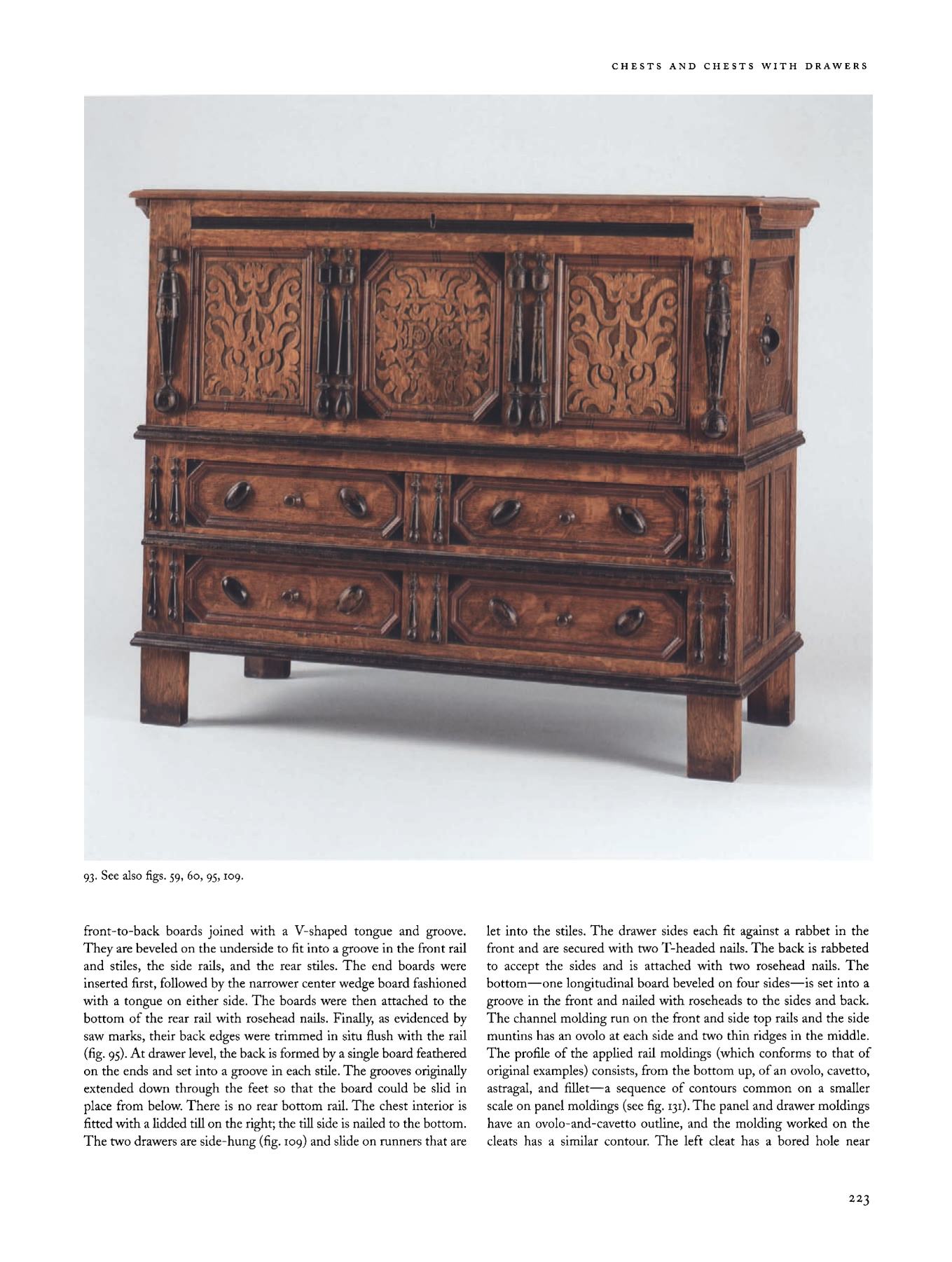|
|
Safford F. G. American Furniture in The Metropolitan Museum of Art : Vol. I. Early Colonial Period: The Seventeenth-Century and William and Mary Styles. — New York, 2007  American Furniture in The Metropolitan Museum of Art : Vol. I. Early Colonial Period: The Seventeenth-Century and William and Mary Styles / Frances Gruber Safford. — New York : The Metropolitan Museum of Art, 2007. —XII, 451 p. ill. — ISBN 978-1-58839-233-6
Frances Gruber Safford is Associate Curator in the Department of American Decorative Arts, The Metropolitan Museum of Art.
The Metropolitan Museum's preeminent collection of early colonial furniture is expertly documented in this long-awaited publication. It presents a broad spectrum of furniture forms made in America during the seventeenth and early eighteenth centuries—from chairs and other seating to tables, boxes, various types of chests and cupboards, dressing tables, and desks—and includes prime examples of the different modes of ornamentation in fashion during that period. Freshly photographed in color for this volume, each of the 141 objects is thoroughly described, with detailed information given on its construction, condition, dimensions, materials, and inscriptions and other marks, as well as provenance and exhibition history. Each object is also explicated in terms of the styles and craftsmanship of the period and evaluated in light of comparative pieces in public and private collections throughout the country.
Furniture from New England predominates, but there are significant examples of forms and ornament characteristic of New York and Pennsylvania, as well. The Museum's masterpieces range from majestic seventeenth-century turned chairs with a spindle back to case pieces in the William and Mary style of the early eighteenth century that feature dramatic veneers or japanning. Several chairs in the collection retain their original upholstery, and some of the chests and cupboards have their original painted decoration. The pigments on the painted pieces have been identified, and the results published here represent the first large body of such information included in an American furniture catalogue. An appendix containing photographic details of construction and decorative elements and another with line drawings explaining furniture terms and showing various types of joints and moldings are also included.
This is the first volume in a series that is dedicated to American furniture in the Museum; the second volume, on the late colonial period, was published in 1985.
Director's Foreword
Among the urban art museums of America, The Metropolitan Museum of Art was the first to focus on the work of our nation’s early furniture makers. This anomalous step taken by an institution originally devoted to the works of classical antiquity and Renaissance Europe must be credited to two museum men with a vision, Robert W. de Forest (secretary and, later, president of the board of trustees) and Henry Watson Kent (assistant secretary and, later, secretary). In 1909 they mounted a loan exhibition, principally of furniture, “to test out the question whether American domestic art was worthy of a place in an art museum.” Late that year, buoyed by the enthusiastic public response, they began to acquire whole collections of American “antiques”—starting with some seven hundred pieces purchased from Boston lawyer H. Eugene Bolles. The intent, realized with the opening of the Metropolitan’s American Wing in 1924, was to display the objects in context, in historic interiors or period rooms. Over the years—in good part through the gifts and bequests of such consummate connoisseurs as Natalie K. (Mrs. J. Insley) Blair—the collection of furniture from America’s colonial and early national periods has grown in size and quality, until today it is unsurpassed.
The maturation of this great collection entails a responsibility to share knowledge about it with the Museum’s various constituencies—the scholarly and collecting communities as well as the public at large. The foundation for such outreach is still the printed “collection catalogue,” which assembles in one place the accumulated knowledge and judgments of generations of curators. The present volume, by Associate Curator Frances Gruber Safford, is a distinguished example of the genre. The distillation of a long and painstaking examination and scholarly assessment of the earliest American furniture in the Metropolitan’s care, her catalogue now takes its place as the authorized record of this important collection.
American Furniture in The Metropolitan Museum of Art. I. Early Colonial Period: The Seventeenth-Century and William and Mary Styles is the initial volume in a chronologically ordered, three-part series on the Museum’s American furniture that was first conceived back in the 1970s. The second volume, by Morrison H. Heckscher, Lawrence A. Fleischman Chairman of the American Wing, on the Queen Anne and Chippendale styles, appeared in 1985; the third, on the Federal or neoclassical styles, is currently being prepared by Peter M. Kenny, Ruth Bigelow Wriston Curator of American Decorative Arts. We are deeply indebted to the William Cullen Bryant Fellows of the American Wing for the funding that made possible both the writing and the publication of this catalogue.
Philippe de Montebello
Director
The Metropolitan Museum of Art
Preface
Catalogues of public collections form a critically important part of the bibliography of American furniture. They provide in-depth scholarly assessments of the finest and most familiar pieces, while also publicizing less well known institutional holdings. In recent years, upwards of a dozen stand-alone single-volume catalogues of such collections have appeared. But the vast scope of the grand old collections—at places like the Boston Museum of Fine Arts, the Yale University Art Gallery, and the Winterthur Museum—has meant that they required publication in multiple volumes with multiple authors over the course of many years. It is in that lavish and labor-intensive tradition that The Metropolitan Museum of Art is addressing the daunting task of publishing, in a manner befitting its importance, its superb collection of American furniture.
Such catalogues do not come about quickly. There is always the temptation to wait for one more acquisition to fill out the collection; research tends to be open-ended, reflecting the desire to examine every last related object; long-completed entries are rewritten to incorporate the latest published findings; and seldom is there an exhibition deadline or other terminal date to command closure.
So the appearance of this volume is indeed a landmark event. Its genesis, as part of a three-volume series devoted to the Metropolitan’s colonial and Federal American furniture, dates back to 1972 and a tripartite series of small exhibitions on aspects of the collection, each accompanied by a modest printed pamphlet. One of these, on seventeenth-century joined case furniture, was the work of Frances Gruber Safford. In the years since that initial foray, in addition to many other departmental responsibilities, Mrs. Safford has mastered the field of seventeenth-century and William and Mary-style furniture.
To that fact the present volume is eloquent testimony. It is an unabashed collection catalogue, based on a deep and thorough examination of every object in the Museum’s rich assemblage. It defines the collection, focusing upon those splendid pieces that deserve pride of place in a history of American furniture. It makes manifest the collection’s geographic strengths (New England) and weaknesses (Pennsylvania and the South). It takes advantage of the wealth of pieces that retain their original painted surface decoration, presenting the results of scientific pigment analysis for the first time in toto. It groups, for comparison and study, large photographic details of other contemporary ornament, such as turnings, and drawings of molding profiles.
As a fellow author in this series, it gives me particular pleasure to honor a longtime colleague and friend for this extraordinary achievement, this labor of love. Among all the examples of the genre, Frances Gruber Safford’s catalogue stands out for the precision and completeness of its observations, the elegance of its presentation, and the keen insight of its conclusions. If not the last word on the collection, it is as close to it as we are ever likely to get. Here is a shining exception to Henry Stevens’s infamous rule, “If you are troubled with a pride of accuracy, and would have it completely taken out of you, print a catalogue.”
Morrison H. Heckscher
Lawrence A. Fleischman Chairman of the American Wing
Contents
Directors Foreword.. VII
Preface by Morrison H. Hecksher.. VIII
Acknowledgments.. IX
Notes on the Catalogue.. XI
Introduction.. 3
CATALOGUE
I. Seating Furniture.. 12
Turned Chairs with a Spindle Back.. 13
Turned Chairs with a Slat Back.. 34
Joined Seating with a Wooden Bottom.. 51
Upholstered, Cane, and Related Rush-seated Chairs.. 64
Miscellaneous Furniture for Sitting and Reclining.. 104
II. Tables.. 120
Tables with a Stationary Top.. 121
Tables with Hinged Leaves.. 143
III. Case Furniture.. 168
Boxes and Other Small Case Pieces.. 169
Chests and Chests with Drawers.. 195
Chests-on-Frame.. 253
Chests of Drawers.. 263
Cupboards and Kasten.. 279
High Chests of Drawers.. 305
Dressing Tables.. 331
Desks.. 342
Appendix 1: Addenda.. 353
Appendix 2: Photographic Details.. 372
Appendix 3: Explanatory Drawings.. 404
Concordance.. 417
Abbreviations.. 419
Bibliography.. 421
Index.. 439
Photograph and Drawings Credits.. 451
Sample pages   
Download link (pdf, yandexdisk; 45,3 MB)
14 февраля 2020, 14:12
0 комментариев
|
Партнёры
|






Комментарии
Добавить комментарий